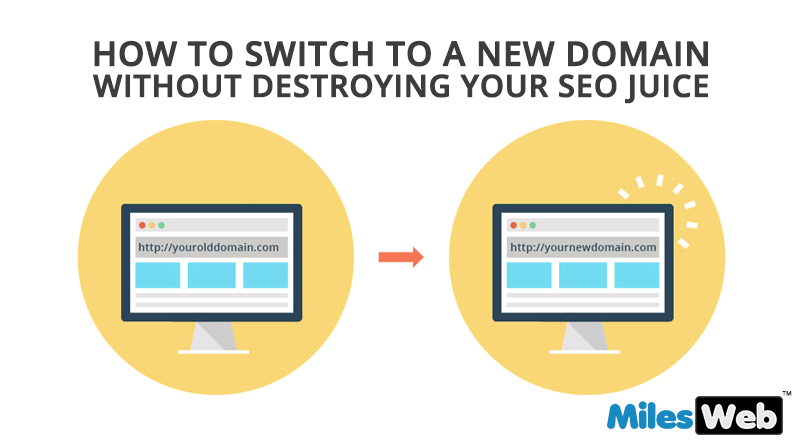How to switch to a new domain without destroying your SEO juice
The main purpose of designing a website is gaining the customer for your business. There are multiple reasons you need to move for a change in your website. For e.g., switching your hosting provider, changing the domain name, design, etc. If you are planning to change your domain name, then it’s important to follow these steps carefully in order to prevent losing all of the authority that you’ve developed for your website.

#1) Check availability of domain before buying:- If you are planning to get a brand new domain, then it is your responsibility to check the availability of domain before finalizing. There are multiple things that need to be taken into consideration. For e.g., check if anyone has registered the same domain before or does Google has penalized that domain?
Use a whois site to check the details of the domain that you have selected. Do a bit research on the domain, check if the domain has indexed pages on search engine, utilize archive.org to take a glimpse of website structure. You can put a new domain on Google or Bing’s webmaster tools to check the statistics or does website has received any warning?
#2) Upload “coming soon”page:- Search engine permits the websites to upload a simple HTML page on their new domain for some period of time. Generally, search engine tries to notice the parked domains by utilizing multiple classifiers. However, placing the content and mentioning the location in the website will write for us education assist the search engine to notice your new domain as a real website and not a parked one.
#3) Redirect the old pages to the new ones:- After designing a new website you can upload the content on the new website and set a redirects from old domain to the new one. Study properly each page of the website and the map page to the suitable new URL. Make sure that you redirect the page to proper URL and avoid redirecting all the page on the new homepage. It is suggested to use 301 redirects because in this way you manage to get on the website. However, 301 redirect is used to make permanent changes in the website. If in case, you plan to undo these changes on the website then you can use 302 redirects, this redirect does not pass any benefits in PageRank, anchor text or any other information.
#4) Take a backup of the data:- You can’t even imagine that your website data have lost and you have not taken a backup of the data. Backup is something that needs to be done on weekly or daily basis. Once you decide to move your website under a new domain, then you will need a server to store your data. Make sure that you have taken a full backup of the data and this totally relies upon control panel or cloud server providers that you have planned to use.
#5) Create a 404 redirect page:- 404 redirect means the page you are searching in search engine is not available on the server. There might be possible that you must have made the mistake while making the changes in the website and this will result in certain links directing to pages that do not exist. However, this will affect the SEO but it can get solved immediately by placing the 404 redirect Page.
#6) Develop and include the new XML sitemap:-
Including an XML sitemaps make it easier for search engine to notice your site pages, therefore it is essential to add to the website. If you are using any of these open source Joomla, WordPress, or Drupal then there are plugins available free of cost that will help you to add the sitemap, but if not, then there are n numbers of sites available online that will generate a sitemap for you.
#7) Submit the new site to Google
Last but not least submit a new website to Google. However, Google recognizes the changes easily and quickly, this will affect your SEO and improve the website performance. You can refer Google Webmaster to know the instructions in detail.
